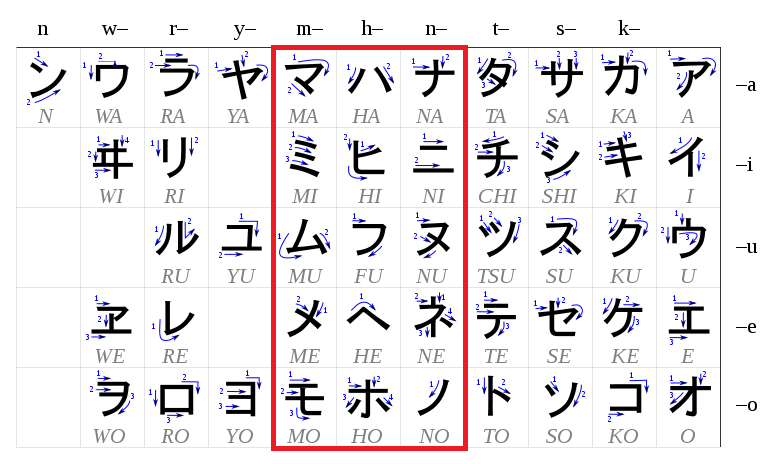Overview

あけましておめでとうございます! Or, Happy new year! Today, we will look at the next three columns of the Katakana table.
Katakana (Fifth column)





Katakana (Sixth column)





Note that ヘ is exactly the same in Katakana as in Hiragana. That makes it easier to remember, doesn’t it?
Katakana (Seventh column)





Additional Sounds
Now, let’s take a look at the additional sounds. Just like in Hiragana, the ‘h’ column can produce ‘b’ and ‘p’ sounds. For instance, ブ is bu and プ is pu.
However, one main point to note is that the ‘b’ sounds can also be taken as ‘v’ sounds. As for how to tell them apart, it just depends on the word they are used in.
For example, in ベガ (Vega), ベ is read as ‘va’, but in ベース (Bass), ベ is read as ‘ba’.
This can get quite confusing, so that is why ヴ from the previous lesson can be used with diphthongs for the ‘v’ sounds, but we shall explore that only in the next lesson.
Example words
Here are some words that can be formed with the Katakana we’ve learned thus far:
- ピアノ (Piano) – Piano
- ベース (Beesu) – Bass
- マイク (Maiku) – Microphone
- ボードゲーム (Boodogeemu) – Boardgame
- ネクタイ (Nekutai) – Necktie
- バッジ (Bajji) – Badge
- ストーブ (Stoovu) – Stove
- ヒーター (Hiitaa) – Heater
- ナイフ (Naifu) – Knife
- メッセージ (Messeeji) – Message
Conclusion
In this fairly short lesson, we’ve learnt about the fifth to seventh columns of the Katakana table, and the three types of additional sounds that can be produced from the ‘h’ column. I wish you all the best for the new year, and hope to see you in the next lesson!
